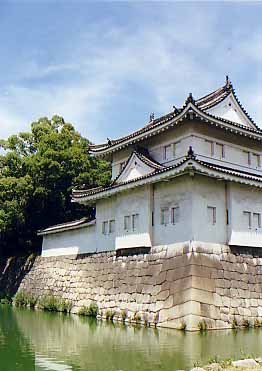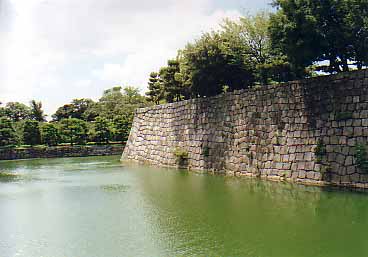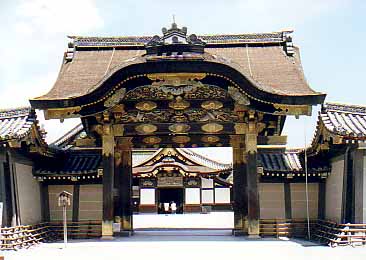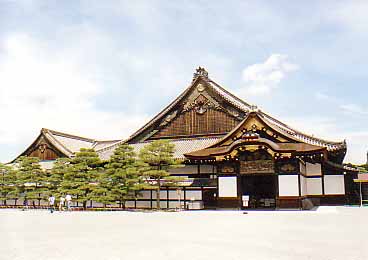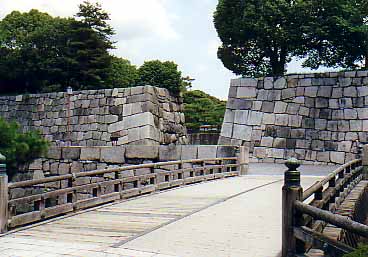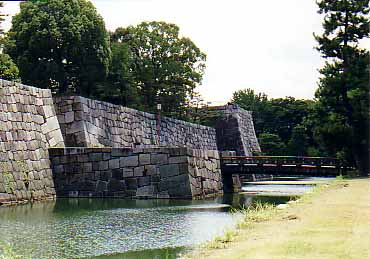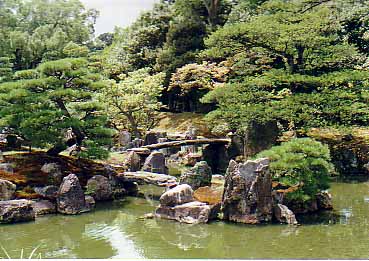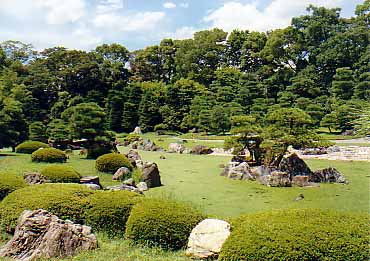
| Main Page |
| Photo Galleries |
| Writing |
| Aikido |
| Zen |
| Peeps |
| Links |
| Contact |
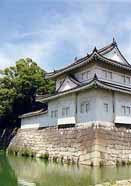
 Nijo
Castle
Nijo
Castle
|
An elaborate frieze above the entrance to the palace is one of many examples of the painstaking detail visible throughout the castle. |
Kyoto is the proud home of 17 UNESCO World Heritage Sites, and Nijo Castle is another shining example of the rich cultural history that permeates the city.
Nijo Castle was designated a World Heritage Site in 1994 - almost 400 years after its construction.
|
The South-east turret on the outer moat of Nijo Castle. |
Originally built by the order of Tokugawa Ieyasu, the first of the Tokugawa Shoguns who ruled Japan right until the dawn of the modern era, Nijo Castle was to be the Kyoto home of the Shogun.
Kyoto was of particular importance in this era, as it was the home of Japan's Emperor, reputed to be descended directly from the gods.
Nijo Castle was to be a symbol of the Shogun's power, significantly placed in the heart of Japan's imperial capital. As the Tokugawa Shogunate was based in Edo (now Tokyo), it was an important show of force.
When the Shogun was not in Kyoto, Nijo Castle would be left with a garrison of loyal troops. Looking at the vast moats and towering walls, the castle radiates not only a sense of beauty, but also the defiant air of impenetrability.
The steep walls rising from the wide moats on all sides of the compound are interesting for their notable lack of any mortar holding the massive rock slabs in place. Each stone - brought from throughout the region by the faithful vassals of the Shogun - is placed in such a way that the weight of those above holds them in place.
|
Not a good place for a ninja: all this moat is missing are some sharks with frickin' lasers on their heads. |
The Shogun's palace itself, known as Ninomaru Palace, is an impressive complex of buildings inside the main area of the castle.
Walking through the buildings gives one an idea of the power of the Shoguns. The sprawling palace consists of five buildings, 33 rooms and 800 tatami mats.
The entire set of structures is built almost entirely out of Japanese cypress wood, and dazzles the visitor with a dizzying array of finely painted shoji doors and walls - all painted by the finest artists of the time. The screens above all of the doors are intricately carved from massive blocks of cypress wood. One is stricken with the obvious wealth and influence of the man for whom it was all built, and it is difficult to imagine what the effect must have been like at the time it was built.
|
The intricate workings of the Kara-mon Gate, which welcomes the visitor to the Palace grounds is a fitting introduction to the splendour that is to follow.(Move mouse over image to see the detail) |
The Ninomaru Palace looms over the courtyard, showing off its massive gabled roof and richly detailed facade. (Move mouse over image for another view) |
|
Not a whole lot was left to chance when the Shogun's safety was involved; this bridge spans a second moat within the castle grounds... |
...with the inner walls seemingly more imposing and impregnable than the outer ones. Towers on all the corners, and plenty of space for archers on top. |
|
No luxury was spared for the Tokugawas and their ministers, either. With this beautiful garden nestled in amongst the palace buildings. |
This garden, the Seiryu-en was added in 1965 as part of a reception area for official guests of the city. It incorporates parts from an ancient residence and garden from the 1600's that were transferred here. |
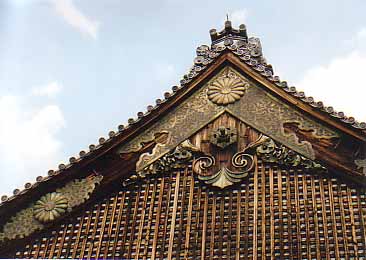 |
All told, our visit to Nijo Castle was an excellent one. It gave an interesting look into the dawning of Japan's most peaceful era, and a peak into many architectural achievements that signified the height of the Momoyama style.
It was interesting to note that the same Nightingale Floors were used in these buildings as in Chion-in, although these floors were considerably less vocal with all the extra traffic that comes through here.

